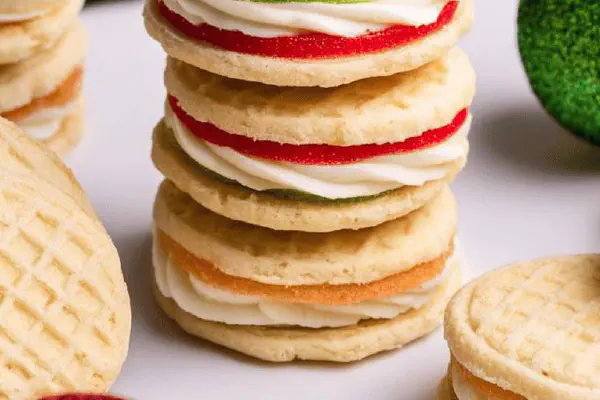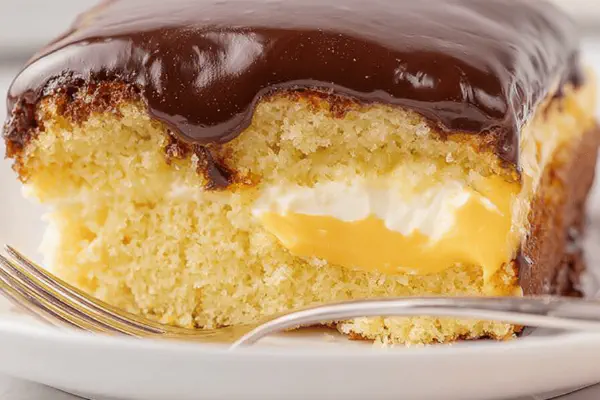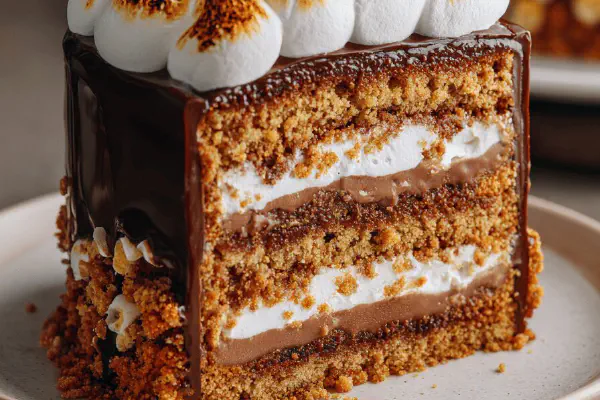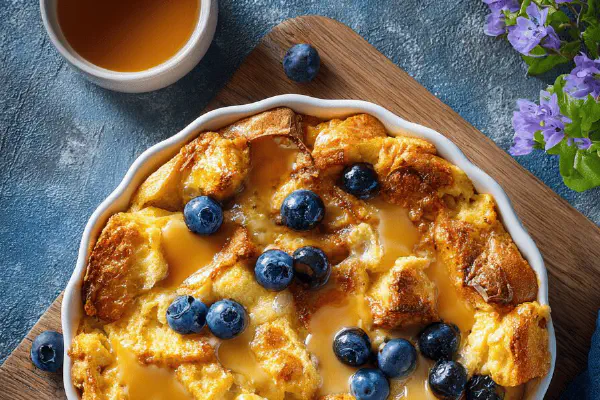Rainbow Layer Cake
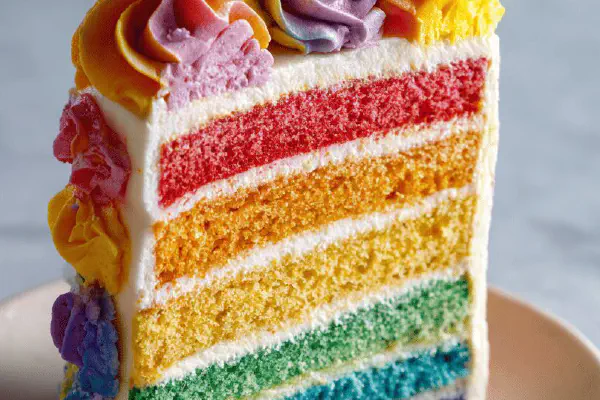
By Emma
Certified Culinary Professional
Ingredients
Cake
- 400 g (3 cups) unbleached all-purpose flour
- 18 ml (1 1/4 tbsp) baking powder
- 2.5 ml (1/2 tsp) salt
- 4 large eggs
- 380 g (1 3/4 cups) granulated sugar
- 15 ml (1 tbsp) vanilla extract
- 180 ml (3/4 cup) light olive oil
- 320 ml (1 1/3 cups) whole milk
Buttercream
- 490 g (2 cups) unsalted butter, softened
- 7.5 ml (1 1/2 tsp) vanilla extract
- 740 g (6 cups) icing sugar
- 6 ml (1 tsp) cocoa powder
- 2.5 ml (1/2 tsp) red gel food coloring
- 0.5 ml (1/8 tsp) purple gel food coloring
- 0.5 ml (1/8 tsp) royal blue gel food coloring
- 0.5 ml (1/8 tsp) green gel food coloring
- 0.5 ml (1/8 tsp) lemon yellow gel food coloring
- 0.5 ml (1/8 tsp) orange gel food coloring
About the ingredients
Method
Cake
- Preheat oven to 175 C (347 F). Position rack mid-oven. Grease and line two 20 cm springform pans with parchment. No shortcuts here: paper prevents crusts sticking and ensures even rise.
- Whisk flour, baking powder, salt in medium bowl. Sift if clumpy. Sets base for muffin-like crumb that cuts clean. Ignore sifting? Denser layers, uneven pockets.
- In large bowl, whisk eggs with sugar and vanilla on high speed for 9-11 min. Like whipping egg whites but with sugar - mixture grows, turns pale, thick enough to trail like ribbon off whisk. This aeration is non-negotiable or cake won’t be light. Past attempts flopped without this; patience pays.
- Slowly stream in oil while whisking softly. Oil adds tenderness; olive oil keeps subtle fruity notes whereas canola’s neutral. Oil should blend completely; poor mixing leads to greasy pockets.
- On low speed, alternate folding in dry ingredients with milk in 3 additions. Start and end with dry. Use spatula if needed at the end for homogeneity but avoid overmixing. Should be a smooth, pourable batter — thick but loose. Too stiff, layer gets dense; too runny, layers spread thin and pale.
- Divide batter evenly between pans. Use a scale if available. Tap pans gently on counter to release any trapped air bubbles. Those pop and settle sinkholes that spoil texture.
- Bake 52-58 minutes. Insert toothpick near center after 50 min; if wet batter sticks, keep checking every 3 min. When toothpick comes out with moist crumbs, not wet batter, cake is ready. Avoid overbaking; it dries edges out. Also smell: sweet vanilla wafts intensify near doneness.
- Cool in pans on wire racks for 20 minutes. Edges will firm. Run a small knife around sides then unmold. Remove from pans, peel parchment and cool completely wire racks. Warm cake is unstable to frost, leads to gloopy frosting and crumbs embedding.
Buttercream
- Whip butter on medium speed until soft and pale, about 4-5 min. Air whipped butter makes difference. Add vanilla extract, mix. Gradually turn speed low and sift in half the icing sugar. Beat smooth and fluffy. Add remaining icing sugar in stages, gradually. Stop if mixture gets grainy or stiff; add 1 tsp milk to adjust texture — should be spreadable, pillowy, not runny or stiff. Skip milk? Frosting hard to spread, cracks.
- Reserve 1 liter (4 cups) of white frosting for coloring. This is important. Too little, colors thin and watery; too much sets you back frosting entire cake.
Assembly and Coloring
- Trim dome tops off cakes with serrated knife. Those rounded caps trap steam and unbalance layers. Aim for level, flat layers; you want stack stability, clean cuts.
- Spread about 180 ml (3/4 cup) white frosting evenly over top of one layer as crumb coat. Place second cake on top. Spread remaining white frosting to enclose entire cake, smoothing surface but don’t fuss over perfect finish yet. Chill fridge 20-30 min to firm up crumb coat. Crumbs locked, frosting layers solidified.
- For red frosting, mix 250 ml (1 cup) reserved frosting with cocoa powder and red gel color. Cocoa deepens red into a richer scarlet, not flat pink. Mix thoroughly; gel colors dabble thick. If frosting too stiff, add vanilla essence or a touch milk. For other colors, divide remaining 740 ml (3 cups) frosting equally into 5 bowls (~150 ml each). Add purple, blue, green, yellow, orange gels individually, stir evenly. Don’t eyeball; color intensity driven by gel quantity and mixing thoroughness.
- Apply 125 ml (1/2 cup) red frosting across top surface. Smooth or create textured peaks with spatula as base for rainbow.
- Attach large round piping tip to pastry bag. Use red frosting to pipe a dot at base edge of cake marking start point.
- Use small offset spatula or teaspoon to press and smooth dot horizontally ~2.5 cm (1 inch). Repeat piping and smoothing dots in sequence, moving around cake to create 6 distinct color bands horizontally.
- Continue using colored frostings in order: purple, blue, green, yellow, orange, repeating dot-then-smooth technique. Each color band should overlap slightly to avoid cake showing through but not bleed into others. Slow turns of cake while working helps. Mistakes? Chill cake, scrape off frosting edges gently with warm metal spatula and redo.
- Refrigerate assembled cake for at least 30 minutes before serving. Buttercream sets and flavors meld better after chill.
Tips and Troubleshooting
- Egg whisking is vital. Underwhipped eggs = dense cake. Use room temp eggs. Cold eggs slow aeration.
- Flour swap? Cake flour, same weight, makes extra tender but less sturdy layers.
- Milk substitution? Buttermilk or yogurt thins batter, more tang, tender crumb.
- Oils swap: Never butter instead of oil here. Butter solidifies, changes texture.
- Dough too thick? Add milk 1 tbsp at a time, fold gently.
- If cake browns too fast, tent foil loosely halfway through baking.
- Color gels can stain utensils—dedicated spoons or liner tips save time.
- If frosting splits or grainy, warm with hands then whip at medium speed.
- Room temp cake layers cold from fridge frosting sticks better; warming triggers softening but risk melting frosting layers.
- If crumb coat shows crumbs after chilling, apply thin second crumb coat and chill again before colored frosting.
Cooking tips
Chef's notes
- 💡 Eggs whipped long, 9 to 11 min high speed. Wait till ribbons trail whisk, pale color. Underwhip, dense crumb. Room temp eggs speed aeration; cold drags it. Tried shortcuts; yielded flat layers. No sifting? Denser, lumps sneak in. Slow oil stream while mixing softens batter texture but avoid separate pockets. Folding dry and milk alternates three times; start and end with dry. No overmixing. Batter consistency clues: thick but loose pour, too stiff dense, too runny spreads thin, pale layers. Tap pans on counter sets crumb, avoids tunneling. Baking times vary, toothpick test crucial. Insert near center at 50 min, check moist crumbs, not wet batter. Smell for vanilla aroma intensifying signals near done.
- 💡 Trim dome tops after bake to level layers. Keeps cake stable; steam trapped domes cause imbalance. Crumb coat spread thin, 180 ml roughly. Chill 20-30 min firm up; locks crumbs, solid base. Reserved frosting needed for coloring; too thin colors break. Red frosting blends cocoa and red gel for deeper scarlet, richer tone versus straight gel. Mix thoroughly, gel clumps if cold or rushed. Smaller bowls for other colors, precise gel quantities maintain vibrant colors. Spread red frosting base, texture peaks create dimension. Rotate cake gently during dot and smooth technique with offset spatula for even coverage, avoid bleeding colors. Chill cake 30 min assembled. Texture changes signal set cream.
- 💡 Butter softened fully before whipping. Air incorporation critical; medium speed 4-5 min until pale and fluffy. Gradual sift icing sugar in halves prevents grainy frosting. Stop if stiff or grainy; 1 tsp milk adjusts spreadability, avoid runny. Milk omitted and frosting hard to spread, cracks form. For color mixing, temperature matters; gels thick and potent. Mixers or spoons? Prefer gentle folding to prevent air loss. If frosting splits, warming hands then remix medium speed revives smoothness. Keep refrigeration timing in mind; room temp layers soften frosting but help adhesion. Crumb coat second thin layer if crumbs appear after chilling avoids messy topcoat.
- 💡 Oil choice affects flavor and crumb. Switched canola to light olive oil for subtle fruity note; no overpowering taste. Butter never substitute here, solidifies, alters texture. Flour types affect layers: cake flour yields tender but fragile layers; all-purpose sturdier, easier stack. Sugar reduction about 10%, compensated by egg air to preserve lift while cutting edge sweetness. Milk alternatives like buttermilk or yogurt add tang, thin batter slightly. Dough too thick? Milk added tablespoon at a time, fold gently to keep batter cohesive but soft. Baking fast browning? Tent foil loosely halfway through bake; protects edges without stalling rise.
- 💡 Gel colors notorious for staining. Dedicated spoons/spatula vital. Mixing gels cold or insufficient blending causes spots or patchiness. Warm frosting back to room temp before coloring to aid integration. To fix frosting spills or mistakes on cake, chill before gentle scrape with warm metal spatula, then redo carefully. Visual cues beat clock; cake surface springy, yellow gold, aroma sweet vanilla peak doneness. Too dry? Cracks appear easily. Crumbs in frosting means insufficient chill or crumb coat thin; second light coat and chill to fix layering issues.
Common questions
What if eggs aren’t whipped enough?
Batter stays dense, cake layers flat. Air bubbles trap volume crucial for lift. Cold eggs slow whipping; room temp best. Alternative? Separate yolks/whites but adds complexity. Tried skipping whipping once; flop layers.
Can canola oil substitute olive?
Yes flavor difference. Olive adds fruitiness, canola neutral. Butter not recommended; solidifies, changes texture. Oil blending poor leads to grease pockets. Pour slowly while mixing. Timing helps integrate oil.
What to do if frosting splits?
Warm with hands, remix medium speed. Grainy? Stop add 1 tsp milk gradually. Avoid too runny. If too stiff, soften but risk cracking. Reserve enough white frosting to dilute colors. Consistency key.
How to store leftovers?
Wrap cake airtight; fridge recommended for buttercream. Can freeze layers separately wrapped tight. Chill before slicing prevents crumb mess. Room temp cake softens frosting, risk melt; handle accordingly. Shelf life about 3 days fridge.
